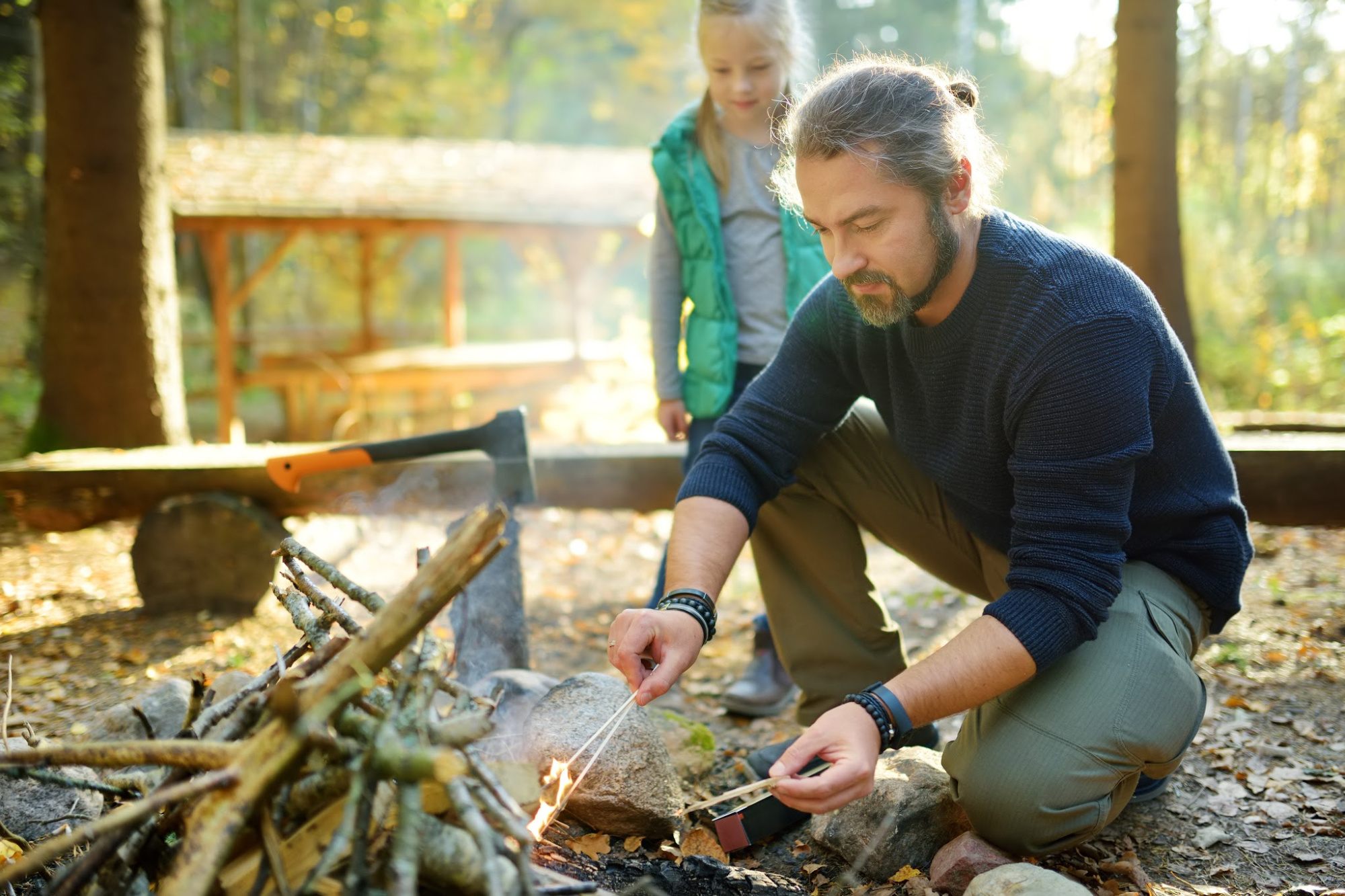What is Needed to Build a Fire
I enjoy few activities more than building a campfire, sitting near it, and watching it. The flames can be hypnotic, often attracting people to it, where conversations tend to become deeper and more meaningful.
A good fire, especially in its initial creation, requires the right combination of three ingredients: fuel, air, and heat. When beginning a wood fire, the first layer of fuel must be composed of thin pieces, like wood shavings, or finely split kindling, or sometimes pine needles.
This is necessary because in the beginning the heat is small—supplied by a single match—so the ratio of air to fuel must be high. If a match is applied to a large log, for example, the air/fuel ratio is too low—far too much fuel—so all you get is a black spot where the match scorched the log.
Once a fire is sufficiently ablaze, you can pile on logs of almost any size and number, and the fire will continue to grow.
On one occasion I built a campfire from well-seasoned oak, and it was so hot and well-balanced that it continued to burn beautifully despite the heaviest rainfall I had ever seen. I couldn’t make out the face of a person eight feet away, and yet the fire acted as though nothing was happening to it.
Loving and Teaching: The Fuel, Air, and Heat for Your Child
Building the happiness of a child is not unlike building a fire. Let’s arbitrarily designate the ingredients.
- Fuel: the love you give your child
- Air: the freedom you give them to make their own choices, also the faith you have in them
- Heat: the teaching devoted to him or her
From moment to moment, especially in the beginning, you must pay close attention to the elements you add to the mix. From a very early age, you can see the spark of life in their eyes, their smiles, their energy.
The spark is there, but at this stage you can easily snuff it out. Anger, disappointment, frustration, criticism, and more can crush that spark into cold darkness.
So, instead of crushing, you love your child—you feed the spark with fuel—but you can confuse giving them what they want with giving them what they need. In the former case, you’re putting too much wood on the fire too soon, and then you get a child who is enabled and entitled. The spark is gone, and all that remains is a pile of wood.
Or you can make the mistake of supplying too little love, meaning twigs spaced too far apart, such that they can’t combine to generate enough heat to keep the fire going. They have too much air, not enough wood and heat.
Always there must be heat, or all the wood and air in the world will do nothing. Teaching—the heat—is an indispensable part of loving them and building on the spark they were born with.
For all their lives, you’ll experiment with the right combination of loving, teaching, and freedom. Too much “love” becomes enabling, which will choke out the fire. Too little heat or too much air are also fatal to the fire of their lives.
Keep going. Keep gathering and laying love on the fire. Teach them and allow them to make their own choices as they are able to understand them. Eventually, they will find other sources of all three ingredients, and then they will radiate their heat and light to everyone around them.
What a beautiful sight and feeling, to observe such a child, who then will not be affected by the wind and rain that are inevitable in life.


